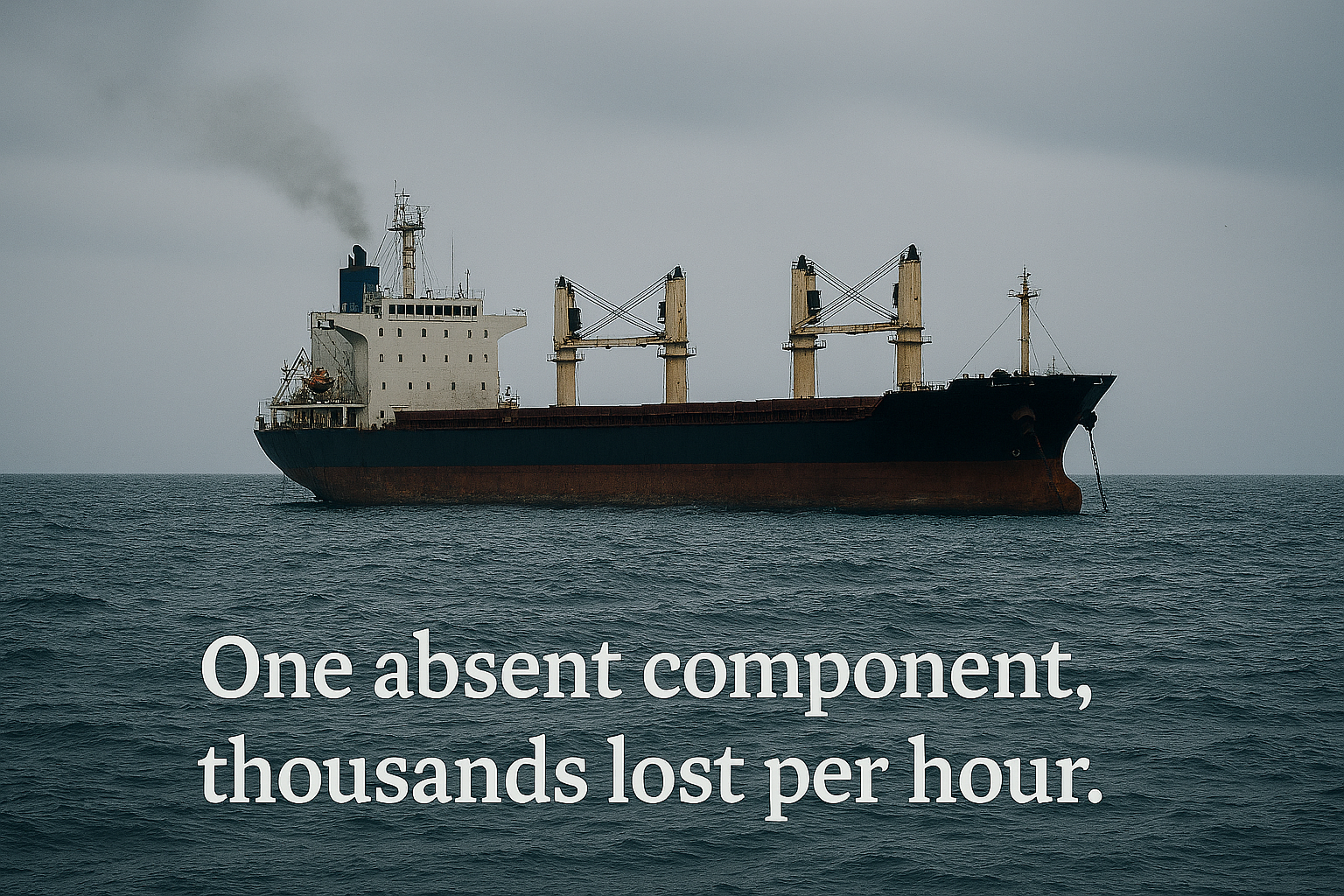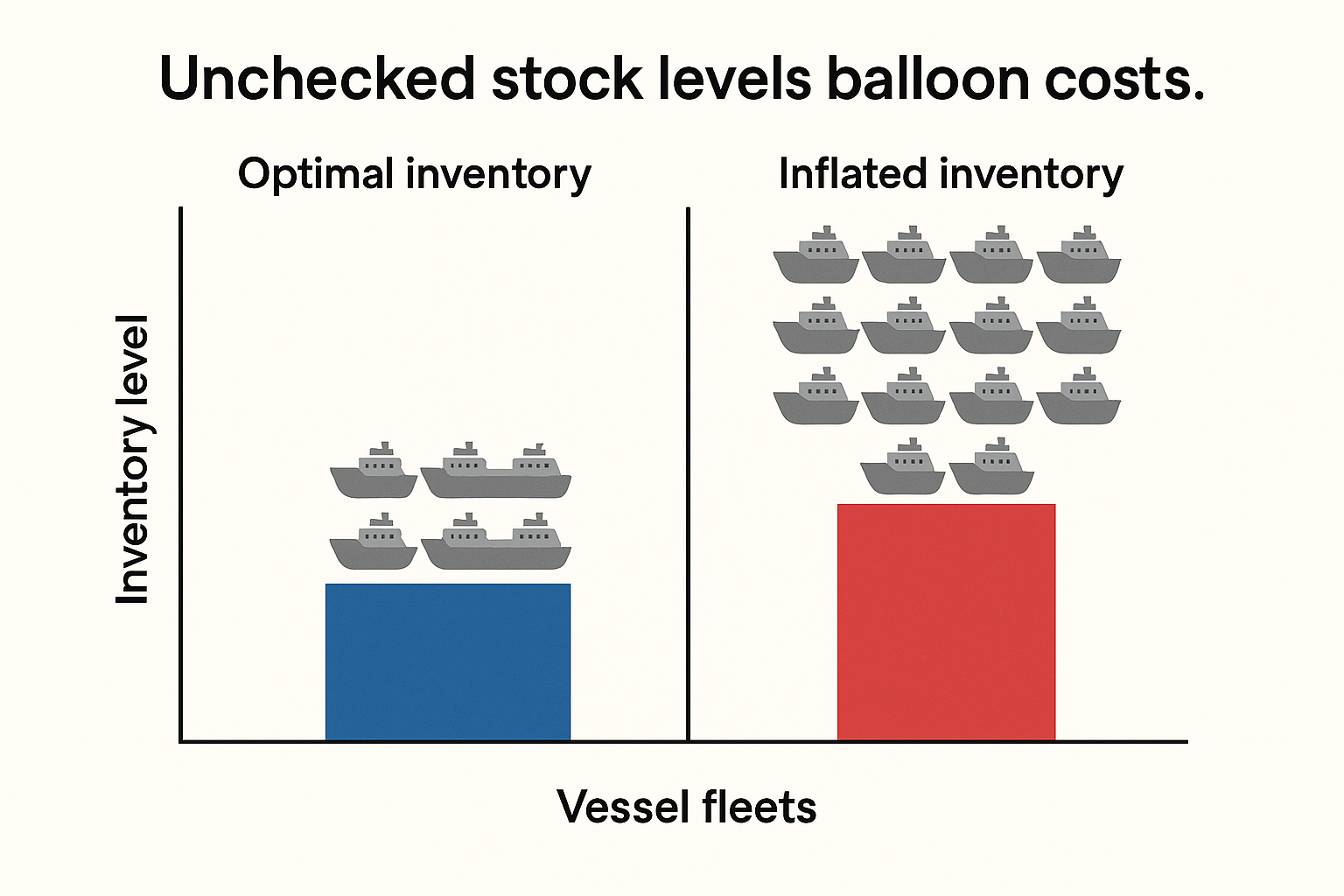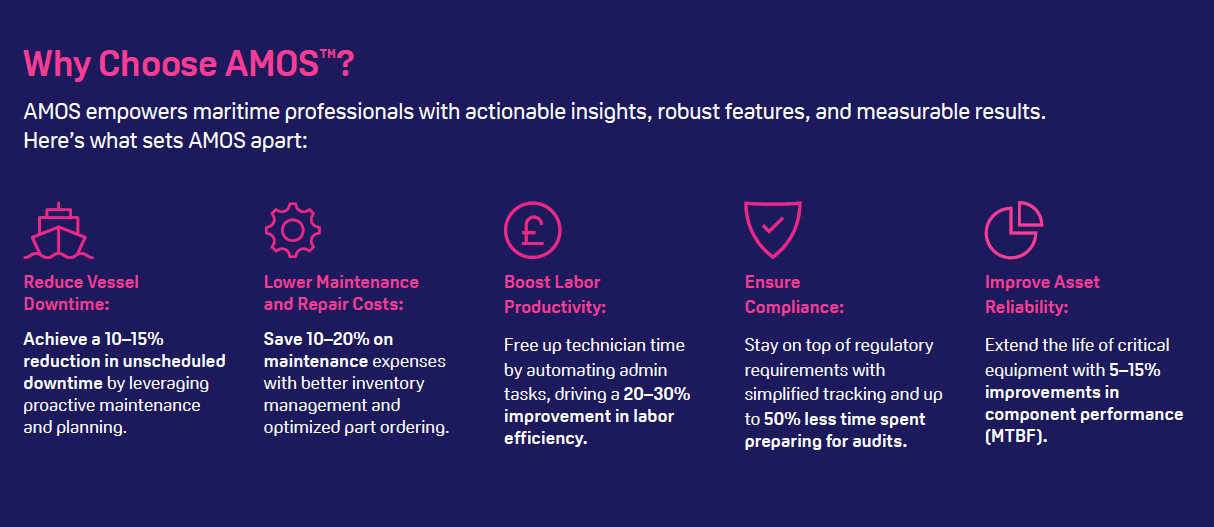The Hidden Costs of Poor Inventory Management in Shipping
In an era when even a single missing spare part can derail schedules, damage reputation, and dent profits, flawed inventory management remains a stealthy, and costly, culprit. The repercussions stretch far beyond finance, hitting operational readiness, environmental sustainability, and regulatory compliance.
In this post, we’ll uncover data-backed insights into these hidden costs – and show why a robust, modernised system like AMOS by SpecTec is essential to turn risk into resilience.
1. Downtime: When a Missing Bolt Grounds Your Vessel
Downtime isn’t just inconvenient – it’s expensive. One prominent industry account highlighted that just the Ever Given blockage in the Suez Canal delayed roughly $400 million in goods per hour, with $9 billion worth of goods impacted daily ToolsGroup
Even in routine operations, missing spares force delayed repairs, making reactive – often expedited – ordering inevitable. This opens the door to inflated costs, longer off-hire periods, and heightened financial liability.

2. Overstocking: A Ticking Financial Time Bomb
Operators frequently overstock to avoid downtime – but this ties up capital, inflates storage costs, and risks obsolescence. One maritime-focused analysis found potential inventory levels ranging between $0.5 million and $1.5 million per vessel https://sbntech.com/.
Onshore studies echo this inefficiency: globally, carrying inventory ties up $1.1 trillion annually, and 22% of supply chain costs stem from excess stock alone Gitnux.

3. Administration Overload: People, Not Processes, in Control
Manual inventory processes are time-consuming and error-prone. Reconciliation, coordination across time zones, and audit prep swamp teams – diverting focus from proactive fleet performance. Poor data quality also derails planning and inflates both risk and effort.
4. Compliance Risk: Traceability Isn’t Optional
Regulators and class bodies demand airtight documentation and traceability. Without digital traceability, missing audit records – or expired/undocumented spares – can lead to failed inspections or compliance penalties. In maritime operations, this isn’t just procedural – it’s business-critical.

5. Procurement Disruption and the Bullwhip Effect
Inaccurate data breeds procurement chaos. Orders get duplicated, misaligned, or delayed. The result? Longer lead times, inflated costs, and frustrated suppliers.
This feeds the bullwhip effect, where small demand fluctuations amplify upstream. Research shows minor point-of-sale changes can lead to up to 40 % variability in supplier orders Wikipedia – a risk fully realised in global shipping.
6. Environmental Impact: Excess Inventory, Unseen Waste
Overstock leads to more than financial drag – it produces waste. Expired chemicals, obsolete electronics, redundant spares – all contribute to environmental harm. Smart inventory management helps curb waste, reducing environmental footprint and supporting ESG commitments.
7. Proven Savings: Real-World Evidence
Take this real-world example: An operator managing a fleet of 40+ vessels achieved over $3 million in annual savings by re-baselining spare parts inventory and optimising replenishment strategy. That’s financial impact with strategic precision – not slashing stock arbitrarily, but optimising what’s onboard.
8. Best-in-Class Inventory Management: What It Looks Like
Modern maritime operations demand intelligent, integrated inventory systems offering:
- Real-time fleet-wide visibility
- Automated alerts and smart reorder thresholds
- Mobile updates via barcode/RFID scanning
- End-to-end integration with maintenance and procurement systems
- Predictive analytics to forecast demand and drive lean stocking
According to VoyageX AI, such systems can reduce holding costs by 20-30%, saving $5,000-$10,000 per vessel annually, while cutting downtime due to shortages by up to 40% VoyageX AI.
Why AMOS by SpecTec Makes Sense
Poor inventory management isn’t just a cost issue – it’s a strategic blind spot. Excess stock, lost uptime, compliance gaps, and environmental exposure all chip away at resilience and profitability.
AMOS by SpecTec changes the game: an integrated maritime ERP suite delivering:
- Fleet-wide transparency in real time
- Automated, policy-driven stock controls
- Mobile data capture for accuracy and audit readiness
- Predictive insights tied to maintenance schedules
- Seamless procurement and spend alignment
Put simply, AMOS turns inventory from a liability into a competitive advantage – bridging gaps, cutting risk, and unlocking tangible savings.

Final Thoughts
Inventory may be invisible when it’s working – but when it fails, the impact is immediate, widespread, and costly. The hidden costs reach deep into operations, impacting finances, performance, compliance, and sustainability.
The solution is clear: data-driven, integrated inventory management that’s intelligent, mobile, and connected. With AMOS by SpecTec, maritime operators can transform inventory from a cost centre into a strategic powerhouse.




